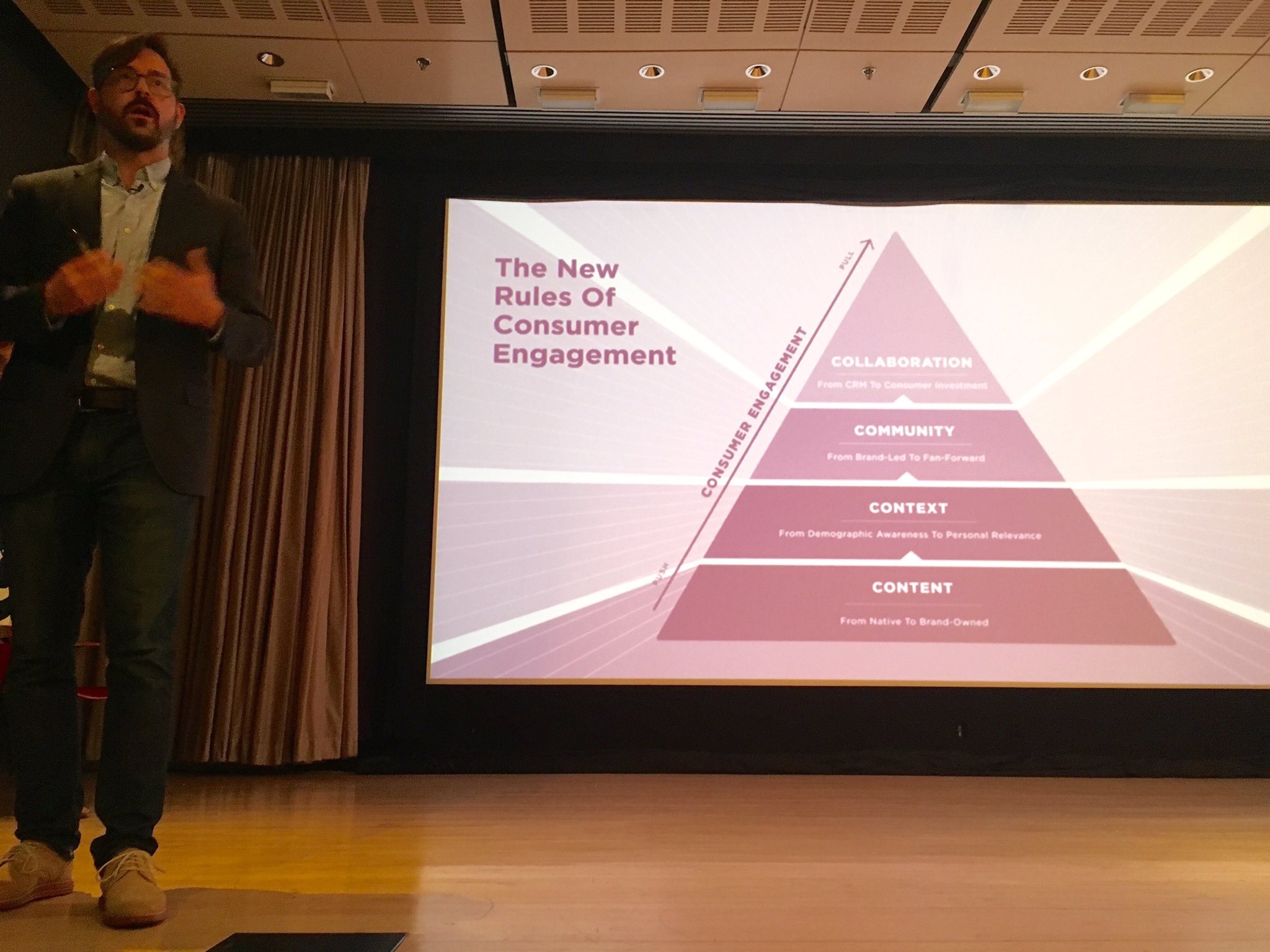PSFK organized their outline of “The New Rules of Consumer Engagement” along a “push to pull” pyramid at the recent PSFK 2016 Future of Advertising Conference. At the base level is content representing “push,” with collaboration representing the pinnacle of “pull” at the top of the pyramid.
With ad blocking on the rise (from $54 million to $121 million according to Ad Blocking Goes Maintstream, PageFair, 2015), “pull” content is the holy grail of marketing.
Content
We’ve all heard “content is king” since social media changed the way consumers interact with brands. Tom Chirico, brand strategy at Twitter, framed this sentiment for 2016 when he said, “Content is king. Context is God,” citing that 76 seconds is the amount of time customers will engage with a brand before moving onto a competitor.
The point in time a brand reaches a consumer is even more relevant today than when social media marketing began. Real-world experiences are an opportunity for brands to provide context for engaging content, leveraging a captive audience relative to time and place.
PSFK shared the case of “You vs. Sharapova,” a virtual reality experience created by American Express at last year’s US Open. The execution delight tennis fans on-site. The brand used HTC Vive headsets for viewers to try to hit back Maria Sharapova’s serve, making it the first VR experience to feature live action.
Education
When a brand can educate their consumer, they are providing value. This is one of the key ways to integrate a brand in a seamless and unobtrusive way. With artificial intelligence on the rise, some brands are tapping into this trend to get ahead of the curve while the customer can still be surprised and delighted.
PSFK cited a 2015 report from Distill Networks that highlights the potential of artificial intelligence as a marketing tool, with 59% of online traffic stemming not from humans, but from query-focused bots.
Quaker Oats noticed a trend that was taking off on Pinterest and Instagram: bloggers making overnight oats and posting their own recipes. Tapping into this brand-relevant content, Quaker Oats took it to the next level. The brand worked with Amazon’s Echo team in order for their AI assistant Alexa to provide step-by-step instructions to make overnight oats when called upon. This hands-free kitchen guide was a seamless way for Quaker Oats to enter the conversation at a highly relevant consumer touch point.
Community
As location-based marketing becomes more relevant – Pokémon Go, anyone? – brands are utilizing the proximity of their product or service to consumers in meaningful ways.
PSFK illustrated the power of community via KLM’s “Layover with a Local” campaign. The branded app allows the airline’s passengers who are traveling through their main transfer hub of Amsterdam to be matched with volunteer locals during long layovers. KLM will even pay for the first round of drinks while the pair explores the city of Amsterdam together.
While the PR stunt was initially planned for one month this spring, the popularity of the program grew to a waiting list and was extended. By offering a value-add service through their branded app that aligned with their core brand – not just asking consumers to download the app – KLM created a sense of community and positive brand association.
As PSFK summarized, “brands that share advice, experiences, or compelling narrative invite consumers to seek out their content rather than forcing it” will end up on top of the marketing pyramid.
Image credit: Twitter



